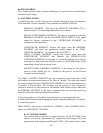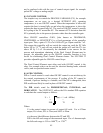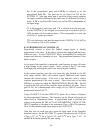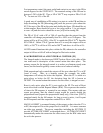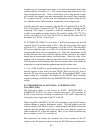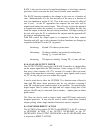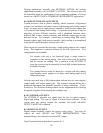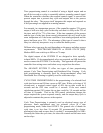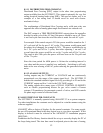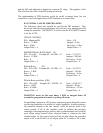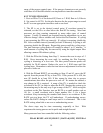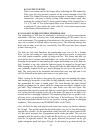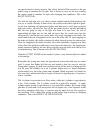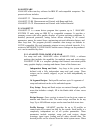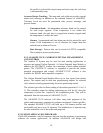51
Time proportioning control is a method of using a digital output and an
on/off device such as a relay to essentially achieve an analog control signal.
When the controller calculates the required control signal, it converts the
percent output into a percent duty cycle and outputs this to the process
through the relay. The process itself integrates this output and responds as
if this percentage was applied in an analog manner.
For example, in a temperature process, if the controller requires 23% power
output, it will set a duty cycle for the relay such that it is fully on for 23% of
the time, and off for 77% of the time. If the time constants of the process
and the type of relay have been correctly determined, this will result in the
same temperature as if the heater could have been analog adjusted and the
power had been set to 23%. The advantage of this type of control is that a
relay is a relatively inexpensive way to control the heater power.
Different relay types may be used depending on the power and other process
requirements: ELECTRO-MECHANICAL or SOLID STATE [SSR].
Modern SSR's can switch up to 480vac at 75 amps.
The digital outputs of the SYSTEM 32 are designed to drive optically-
isolated SSR's. If electromechanical relays are required, an SSR should be
used to connect the SYSTEM 32 to the relay. This approach will protect the
controller from wiring errors and isolate every output from the others.
The ANAFAZE SYSTEM 32 offers two types of time proportioning
outputs: Cycle Time Proportioning and Distributed Zero Crossing. Cycle
time proportioning is normally used for electro-mechanical relays and
Distributed Zero Crossing is typically used for solid state relays
CYCLE TIME PROPORTIONING is the proportioning of a selected fixed
cycle time between an ON time versus an OFF time. With a cycle time of 10
seconds and a required control signal of 40% the on time would be 4
seconds and the OFF time would be 6 seconds. If the next control
calculation required 38% output the on time would be 3.8 seconds and the
off time 6.2 seconds. Thus as the PID control calculation changes the
output required the system responds exactly, and the output duty cycle is
adjusted to maintain the process at the setpoint.
Cycle Time Proportioning is primarily used on electrical energy type of
processes. Some applications may use solenoid valves in a time
proportioning mode, rather then ON/OFF. The general rule of thumb for
cycle time is no less then 10 seconds [20 recommended] for electro-
mechanical relays and no more then 5 seconds [2 recommended] for SSR's.
Normally the faster the cycle time, the closer the control and the more wear
on the relays.




